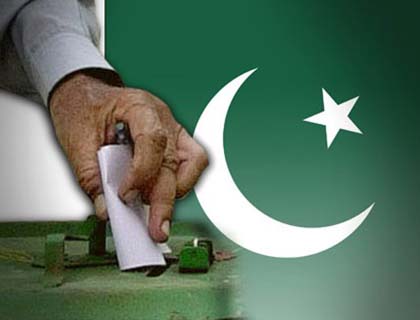Finally the election at national level came to an end in Pakistan. Pakistanis paid huge amount for the election in order to elect an accountable and responsible government. More than a hundred people were killed and hundreds were injured in the campaigning. It was the election that will hand over the power from a civil government to another civil government. So, from this prospective, it will be remembered as turning point in the political history of the country in
terms of democratic transition of the power. But should Pakistani be optimistic that the long lasting political storm may end up to a serene river? I hope it was so but there are signs indicating the opposite.
However, the result has not been announced but it is said that Muslim League-Nawaz is the front runner and Tahreek-e-Ensaf (Movement for Justice) under the lead of Imran Khan follows it. In general Shariah-tilted political parties have emerged from an assertive position while secular parties are limping behind.
Leaders of secular parties failed to take part in election campaign because insurgents had vowed to target members and followers of secular parties. Talibanization an extremist movement, boomed and developed in environment from the heart of the country. Previously, their influence was restricted to tribal areas, but no region inside the country is out of influence as well as target range. Their spectacular attacks on the most barricaded areas and slaughter of security forces on their very headquarter switch the alarm on to everyone who are trying to preach democracy, co-existence, and cultural and religious pluralism.
The alarming sectarian violence, particularly, target of Hazaras, the small community in Bluchistan that is a great source of wealth for tolerance and multiculturalism because they have always supported pluralism and never took part at any sectarian clashes, also weaken trust on security establishment. After series of attacks on Hazara community which have left more than 400 dead since the start of 2013, analysts voice concerns that individuals in military, police or
security intelligence are aware of such attacks but neglect to take action, or some of them might be cooperating. Otherwise how it is possible that a ton of explosive is loaded on a truck and militant drive it miles away to target the community without a single security notice that also in places like Bluchistan where security checkpoints are all over the city.
So, there is not any exact information about to what extent Taliban have influenced security establishment or are there Taliban infiltrators within the establishment? Though turning of forces against their comrades has not been reported yet as occur in Afghanistan, but it is widely believed that Tahrik-e-Taliban Pakistan (TTP) enjoy the attention of few among military commanders. Moreover, the phenomenon of the so-called green on blue is largely related to presence of foreign security forces Afghans’. It is highly possible that once foreign security forces withdraw from the country, Afghan police and soldiers may be not instigated to empty the magazine of their weapons on the chest of their colleagues.
What I am trying to say is that, however no information at my access for the level of sympathy for radical groups inside the security establishments of Pakistan, Pakistani Taliban enjoy some sort of support from specific military generals and officers.
Secondly, during recent decades Taliban, generally extremist wings and fronts have succeeded to develop huge sympathy among public. As I said previously their influence was limited to rural areas or tribal areas where they were supported on religious and tribal lines, but the momentum
changed to their favor. They have concentrated on prestige investment in urban areas. They now enjoy huge public sympathy across the country. Even the most secular cities where women could walk out freely without observing Hijab, now they receive strange look from public or same sex who trying to convince them to wear Hijab. Putting a glimpse to Hijab observation, the difference from a decade ago may be witnessed. While previously, wearing Burqa looked so weird and awkward in cities like Lahore, but now it has become so formal. Religious leaders hold huge respect than any social layers in the country.
It has been decades that religious Madressahs are the most respected and sacred places. Since the start of Jihad against former Soviet Union, Madressahs have been the greatest host for Afghan youngsters where they followed religious studies. For instance Mullah Mohammad Omer, the iconic Afghan Taliban leaders, and several of group’s leaders were also students of those Madressahs.
So, due to unwritten convention, Pakistani rulers never imposed regulation on their activities. There has been no monitoring what these Madressahs are doing? What are their curriculum and syllabus for students? Are they involved in physical training for war or suicide bombing or not? When I was in Pakistan, when a suicide bombing hit people, angry protestors attacked and looted a Madressah where reportedly weapons were found.
Such incidents show that militants receive training in the very such places yet government has accepted this evil due to necessity. The Jihad of Afghanistan and lasting rivalry with India compelled Pakistani rulers with secular mindset to accept such regressive activities for democracy for the sake of bigger political agenda and necessity of foreign policy.
Taliban avoided targeting Pakistan Muslim League-Nawaz and other Shariah-tilted political parties. However, these parties previously announced to cut ties with international forces involved in Afghanistan which is maintained the reason behind insurgency rise in Pakistan. But let’s see what changes may happen in the foreign policy of Pakistan.

